2014 Bodley Head/FT Essay Prize winner: Eiderdown
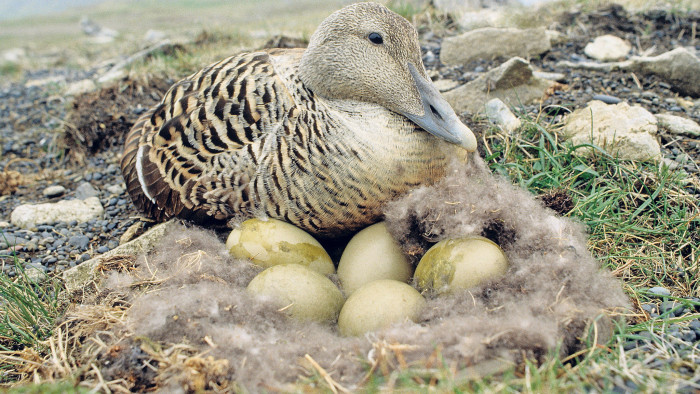
Simply sign up to the Life & Arts myFT Digest -- delivered directly to your inbox.
In Isafjordur, the capital of Iceland’s remote Westfjords region, a Lutheran pastor compares eiderdown to cocaine. “I sometimes think that we are like the coca farmers in Colombia,” he says. “We [the down harvesters] get a fraction of the price when the product hits the streets of Tokyo. This is the finest down in the world and we are exporting it in black garbage bags.”
It is difficult to describe the weight of eiderdown in a language in which the epitome of lightness is a feather. Unlike a feather’s ordered barbs arranged around a solid shaft, under a microscope eiderdown offers a portrait of chaos: hundreds of soft barbs branch out from a single point, twisting around one another and trapping pockets of air. When I return from Iceland, I ask my wife to close her eyes and put her hands out. After placing a duck-sized clump of down in her hands, I ask her what she feels. “Heat,” she says.
Over centuries eiderdown has been treasured by Vikings, Russian tsars, and medieval tax collectors who accepted it as revenue. Today, its buyers are the global super-rich. In Iceland I hear stories about Gulf royals who sleep under eiderdown in the desert and Russian politicians whose hearts can be warmed with the gift of an eiderdown duvet.
The properties of eiderdown — extreme lightness and insulation — make sense when you consider the life of its owner. The eider is a fat sea bird, more penguin than duck, and many of them spend most of their lives in the Arctic Circle. Visit the Icelandic coast and you will see hundreds, bobbing gregariously in the sea. Brash creatures, their boldness inspires admiration in the Icelanders. “The eider is an unsung hero, far braver than any bird of prey, which it is known to attack to protect its offspring,” one local tells me.
The story of how most feathers come to fill our bedding is anything but comforting. According to trade bodies, most feathers are a byproduct of the meat industry. Less fortunate birds may have their plumage ripped out while they are still alive, a practice known as live-plucking (and reported to be common in China and Hungary, both major exporters of down).
Holding a clump of eiderdown in my hand, one Icelander tells me something that seems to offer an alternative to this unsettling relationship between humans and birds. He says that the eider it once belonged to is probably still alive. Not in some dark barn, or even in an open-air enclosure, but in the wilds of the Arctic Circle.
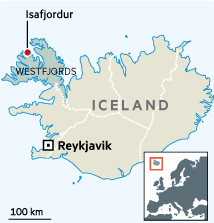
In a café in Isafjordur, the pastor explains how he harvests eiderdown. As part of his parish duties, he runs a small farm, a throwback from earlier times when pastors in remote areas would survive off the land. Even now, life here can be unpredictable, especially in winter when the weather turns violent. Almost 20 years ago, two villages in the Westfjords were buried by avalanches, killing 34 people. Parish ministers were among the first to reach one of the villages and offer comfort to the survivors.
Every June, he says, about 500 ducks arrive from the sea and waddle to his farm. Eiders do not naturally nest in large colonies, but will congregate close to human settlements to seek shelter and protection. The ducks nest anywhere: in tyres, doorways and even houses. “I always take a lot of flags with me and I put a flag beside each nest so I will be able to find it again. Because they are incredibly camouflaged, these ducks. You can almost step on them.”
At night the pastor guards the flock of eiders from their predators: seagulls, foxes and mink. “I was quite lucky in that I got interested in guns when I was just a little over 20,” he says. “It was before I started studying theology.” If he were to fall asleep, a fox would have a feast of sitting ducks. “It’s more than a financial loss; it’s also like they are depending on me. So I don’t want to let them down. I used to be a nightwatchman so I have a little bit of experience staying awake.”
In the Middle Ages, pelicans were thought to pierce their own breast to draw blood to feed their young. The mythical act was known as ‘vulning’, a Christlike act of self-sacrifice.
On the pastor’s land the eider, too, makes herself vulnerable for her offspring, though it is down, not blood, which she draws from her breast. From this down she builds a nest for her eggs; her own bare skin, freshly revealed, covers them with warmth. She sits on her eggs for 28 days, during which she may lose a third of her body weight; some mothers may starve to death.
After incubation, the eggs hatch, the mothers waddle back to the sea with their offspring, and the pastor gathers their down, his protection fee. “I never collect the down until they are gone,” he says. “Some of the farmers say they like to take a little bit of the down [while they are still nesting]. I just like to leave them, not to disturb them in any way. [ . . . ] If you frighten them, they jump up and shit all over the nest.”
The scene described by the pastor has been a common sight in Iceland for centuries. Down has been collected here since the arrival of Norse settlers in the ninth century. The sight of thousands of tame eiders close to human settlements astounded early European travellers in Iceland. C W Shepherd, an Englishman who visited the island of Vigur in the Westfjords in 1862, described a farm besieged by eiders: “The earthen walls that surrounded it and the window embrasures were occupied by Ducks. On the ground the house was fringed with Ducks. On the turf slopes of its roof we could see Ducks, and a Duck sat on the door-scraper . . . A windmill was infested, and so were all the outhouses, mounds, rocks and crevices. The Ducks were everywhere.”
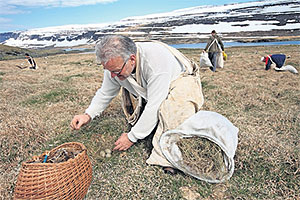
Environmentalists, economists and ornithologists have all fallen in love with Icelandic harvesting. There is an irresistible simplicity to the relationship between the harvesters and the eiders. If a harvester cares for the ducks, more and more will come to nest, increasing the amount of down that can be gathered. At times, the relationship can be tested. Unlike the pastor, some harvesters cannot resist collecting the down while it is still fresh, removing a portion of an eider’s nest before her eggs have hatched, and replacing it with straw. It is not pleasant to watch nesting eiders being disturbed, but they quickly return to their nests and do not apparently hold grudges; the same ducks return year after year.
In 1914 Charles Wendell Townsend, a physician and amateur ornithologist from Massachusetts, became obsessed by the Icelandic method while investigating the declining numbers of eiders in Labrador, Newfoundland and Nova Scotia. Dismayed by the practice of duck hunting in North America, he proposed the introduction of eider reservations where down could be harvested for profit. He had read about Icelandic harvesting in travellers’ accounts and dreamt of introducing a utopia of ecology and commerce along the coast of the US and Canada. “The cooing notes, so long few or absent in many places, would again resound over the waters,” wrote Townsend in A Plea for the Conservation of the Eider (1914). “And best of all, to the practical minded, the birds would pay well for their protection by gifts of eggs and valuable eiderdown.”
I wonder how fragile the relationship is between Icelanders and the ducks; and whether man’s drive for profit might somehow kill the golden goose. If demand for down reaches the level of that for rhino horn, bear gallbladders or elephant ivory, could the eider be driven to extinction? Might Icelanders have to develop intensive farming techniques to increase the supply of down, possibly to reduce illegal hunting?
These possibilities seem remote in Iceland, where eiders have been respected for centuries. I see this first hand on the remote island of Vigur, which looks out into the Arctic Circle. I meet a 16-year-old boy, whose family has inhabited a farm on the island since the 19th century. On his forearms I notice dozens of small scars inflicted by puffins which he catches, mid-flight, with a vast butterfly net. He is happy to snap hundreds of puffins’ necks to kill them for their meat, but the eider is untouchable, a sacred bird. His uncle later explains that eiderdown accounts for more than a third of the family’s income.
If the Icelanders’ relationship with the ducks does change, then it may be for different reasons. The Norwegians once harvested down all along their coastline, but in the 1960s they discovered a far more profitable natural resource — oil — and began to move away from remote coastal areas. “The eiders tried to move with them because they felt protected by humans,” explains one harvester. “The ducks would rather live with cats and dogs than seagulls.”
Iceland has not yet struck oil, but it does have untapped reserves of hydroelectric and geothermal power, which the government is looking to exploit and export. (It is considering plans to lay a submarine cable between Iceland and Scotland that would provide electricity for European homes.)
The future of Iceland’s renewable energy sources rouses strong feelings in the country, where large swathes of pristine landscape have already been flooded or “drowned” to create the conditions required for hydroelectric power generation. If the Icelanders choose to develop their country’s renewable energy sources to the full and export electricity as the Norwegians export oil, eiderdown harvesting may begin to seem an outdated tradition.
In the cycle of a natural resource, it is generally its extraction that is its most unpleasant and destructive stage. To win rights to an oil block in a developing country, an oil company may slip a sweetener into an official’s pocket. To increase the production of feathers, a goose farmer may find it profitable to wrench them from a bird while it is still alive. The story of down harvesting is so different from these narratives of compromise and degradation. Once it is traded and marketed, however, it becomes just like any other commodity.
“What looks like a nice, peaceful, old-fashioned small trade from the outside is actually an octopus of monopoly and manipulations,” says Jon Sveinsson, an Icelandic businessman. “Scratch the surface, follow the money and the picture quickly changes from idyllic hobby to cut-throat exploitation.”
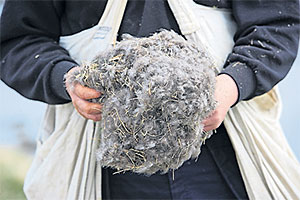
A former naval officer, Sveinsson has devoted his life to eiderdown. He is involved in all stages of its life cycle, from the duck’s nest to an oligarch’s bedding. Since childhood, he has harvested down on his family’s farm in the Westfjords, later investing hundreds of thousands of euros developing his own machinery to dry and clean it. Above all, he is a marketing man. An avid reader of Edgar Allan Poe, he compares his marketing efforts to detective work: “looking for traces of potential clients, finding what spots they frequent, like a hunter tracks a rare game to its watering hole”.
Sveinsson explains that to produce a single kilo of refined down takes a colossal amount of work. About 60 nests must be collected, dried and cleaned to remove dirt, seaweed and vegetation. This process was mechanised in the 1950s when Icelanders developed their own drying and cleaning technology. Despite all this labour, the value of the down produced and refined in Iceland is only a fraction of its retail price. Intermediaries, such as Japanese and European wholesalers, buy in bulk after it has been processed. It is then stuffed into pillows, duvets and clothing sold in Japan, China, Germany and Russia. The Icelanders receive about €3m for the three tonnes of down which — give or take — they export each year, but according to Sveinsson, its retail value may be 10 times this amount. “The harvesters actually get a lower percentage of the retail value than an African coffee grower,” he says.
His words remind me of what the writer Rebecca Solnit called (in a 2008 essay for Harper’s magazine) Iceland’s “fairy tale told backward” in which its people “had been dispossessed of their great gifts and birthrights”. It began, she argues, about three decades ago when Iceland privatised the right to fish and introducing quotas that could be traded and accumulated. Today large firms predominantly control the fishing industry. Then in 2006 a remote highland wilderness in eastern Iceland was flooded to create a huge reservoir as a power source for an aluminium smelter. The cost of the hydropower project was about $2bn, much of it borrowed from international banks. Critics of the scheme claim that the environmental and financial price was too high for the several hundred jobs it created.
Eiderdown, sold off cheaply, seems to be just another chapter in this story. The writer Andri Snaer Magnason points out that the Icelandic word for “windfall” is hvalreki, literally a beached whale. While a windfall in English evokes falling fruit, its Icelandic translation is a stranded sea mammal, a gift of free meat.
When explaining why the Icelanders are getting such a raw deal from down, Sveinsson points towards Iceland’s historical relationship with its largest export, fish. “Abundant fishing grounds have been a resource that have shaped the Icelandic economy as well as our mentality, a blessing and a curse in one,” he says. “A kind of hand-to-mouth attitude developed; there was always the knowledge that one day the weather would calm down and the boat could set off for another good catch.”
Townsend, the American who fell in love with Icelandic harvesting, apparently never set up eider reservations in North America. After the death of his wife in 1917, he travelled the world by steamer, setting his plans to one side. Today there are few sites outside Iceland where harvesting takes place. It has proved difficult to replicate a tradition which is so rooted in Icelandic history that it ceases to inspire any wonder among its practitioners.
Back in Isafjordur, the pastor tells me about a Japanese film crew who made a documentary about him. For several weeks they followed him around his farm, recording him collecting down with his children, while sidestepping nesting eiders. He appears bemused by their attention just as he is by mine. After all, he says, the down is only some braud, a slice of his daily bread.
A story of prizewinning prose
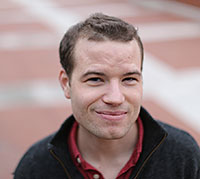
The 2014 Bodley Head/FT essay prize attracted hundreds of entries from young writers around the world. The competition, now in its third year, aims to discover new talent in long-form non-fiction writing.
The five-strong judging panel included historian and FT contributing editor Simon Schama and Tom Weldon, chief executive of Penguin Random House UK.
The judges chose Edward Posnett, 30, from London, as the winner of this year’s £1,000 first prize. A visit to the London Wetlands Centre, home to several eider ducks, led to his winning essay, which deals with the complex relationship between Icelanders and these ducks. Posnett says: “It’s wonderful that the FT and Bodley Head are committed to the sort of work which demands weeks of research, rather than a few hours. All young long-form writers will understand how hard it is to get your work read and published, particularly if you pursue risky projects like wild duck chases.” He is now working on a book about oil, the Middle East and the second world war.
Simon Schama said of Posnett’s winning entry: “This was the opposite of fluff. It was a perfect essay with a very big subject coming out from a narrative of a small bird.”
Photographs: Plainpicture/Minden Pictures; Cyril Ruoso; Charlie Bibby
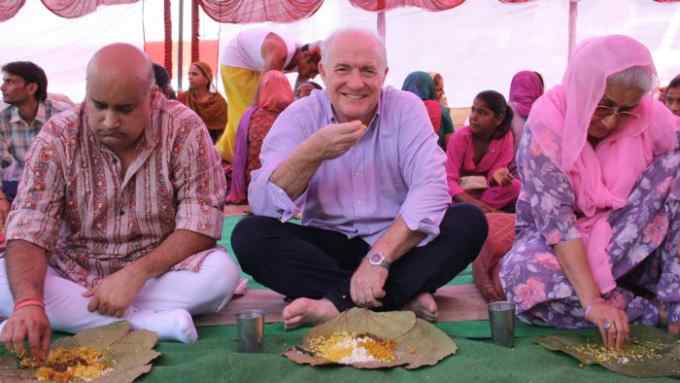
Comments